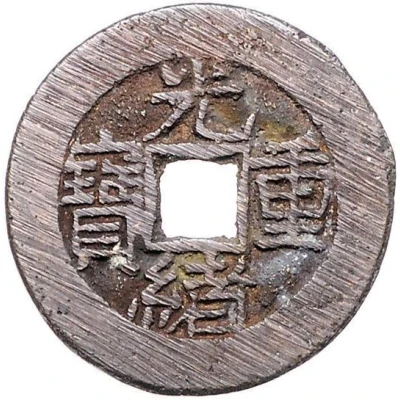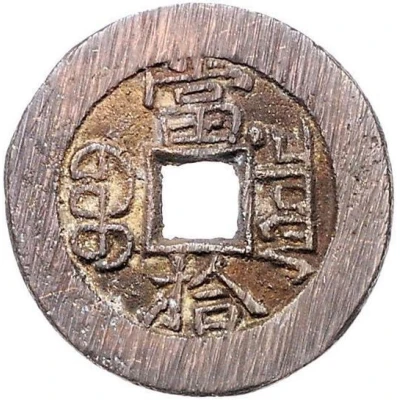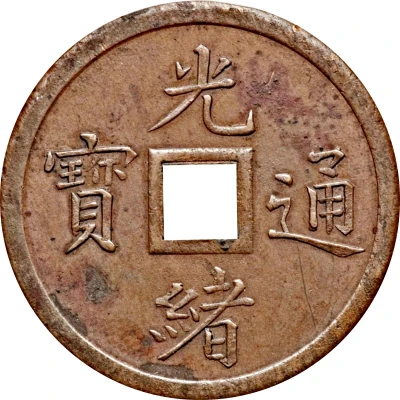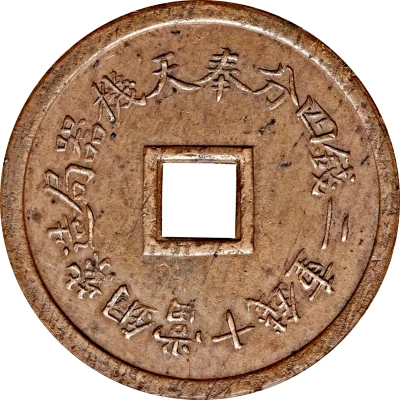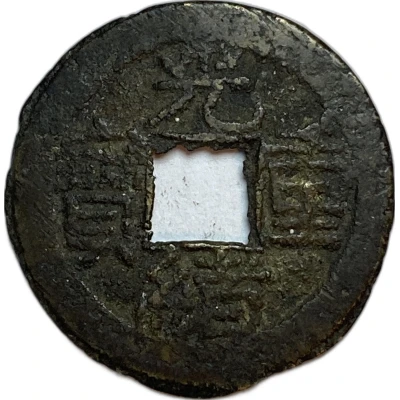
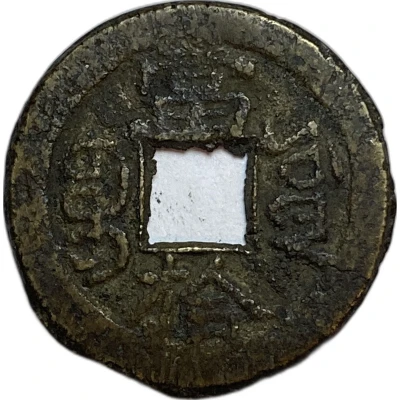

© Bone ranger (CC BY-SA)
10 Cash - Guangxu Zhongbao; Boo-yuwan; type B; with dot ND
| Brass | - | 27 mm |
| Issuer | Empire of China |
|---|---|
| Emperor | Qing dynasty › Guangxu (光緒帝) (1875-1908) |
| Type | Standard circulation coin |
| Years | 1887-1889 |
| Value | 10 Cash |
| Currency | Cash (621-1912) |
| Composition | Brass |
| Diameter | 27 mm |
| Shape | Round with a square hole |
| Technique | Cast |
| Orientation | Medal alignment ↑↑ |
| Demonetized | Yes |
| Updated | 2024-10-04 |
| Numista | N#226722 |
|---|---|
| Rarity index | 97% |
Reverse
Two Manchu words (read vertically) separated by the hole, all with one Chinese ideogram above and one below, and with dot to the upper left.
Scripts: Chinese (traditional, regular script), Mongolian / Manchu
Lettering:
當
ᠪᠣᠣ ᠶᡠᠸᠠᠨ
台
Translation:
Dang Shi / Boo-yuwan
Value 10 / Boo-yuwan
Edge
Plain
Comment
DocBeiStrokesDocBooProt
Interesting fact
One interesting fact about the Standard circulation coin 10 Cash - Guangxu (Zhongbao; Boo-yuwan; type B; with dot) ND (1887-1889) from Empire of China made of Brass is that it was designed by a French engraver named Charles Fournier. Fournier was a renowned numismatist and engraver who was commissioned by the Chinese government to design a new currency for the country. His design for the 10 Cash coin featured a unique blend of Chinese and Western elements, with the obverse side bearing the Chinese characters for "Zhongbao" (中寶) and the reverse side featuring a stylized dragon and the coin's denomination. The use of brass as the material for the coin was also a deliberate choice, as it was a more durable and affordable alternative to silver or gold. Overall, the 10 Cash coin is a fascinating piece of numismatic history that reflects the cultural exchange and innovation of the late Qing dynasty.
